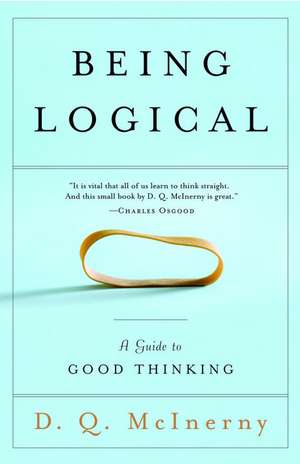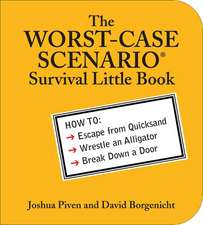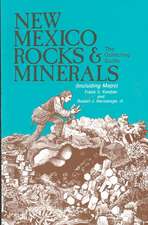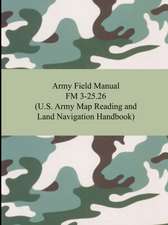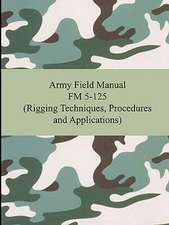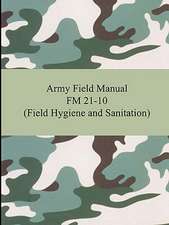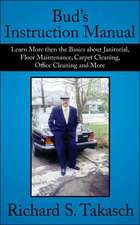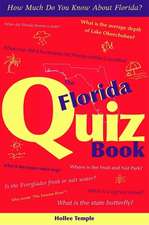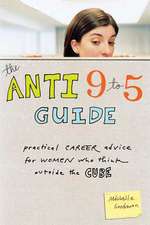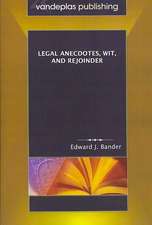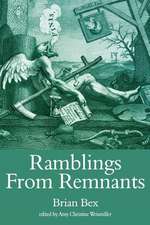Being Logical: A Guide to Good Thinking
Autor D. Q. McInerny, Dennis Q. McInernyen Limba Engleză Paperback – 30 apr 2005
As McInerny notes, logic is a deep, wide, and wonderfully varied field, with a bearing on every aspect of our intellectual life. A mastery of logic begins with an understanding of right reasoning–and encompasses a grasp of the close kinship between logical thought and logical expression, a knowledge of the basic terms of argument, and a familiarity with the pitfalls of illogical thinking. Accordingly, McInerny structures his book in a series of brief, penetrating chapters that build on one another to form a unified and coherent introduction to clear and effective reasoning.
At the heart of the book is a brilliant consideration of argument–how an argument is founded and elaborated, how it differs from other forms of intellectual discourse, and how it critically embodies the elements of logic. McInerny teases out the subtleties and complexities of premises and conclusions, differentiates statements of fact from statements of value, and discusses the principles and uses of every major type of argument, from the syllogistic to the conditional. In addition, he provides an incisive look at illogical thinking and explains how to recognize and avoid the most common errors of logic.
Elegant, pithy, and precise, Being Logical breaks logic down to its essentials through clear analysis, accessible examples, and focused insights. Whether you are a student or a teacher, a professional sharpening your career skills or an amateur devoted to the fine points of thought and expression, you are sure to find this brief guide to effecting reasoning both fascinating and illuminating.
From the Hardcover edition.
Preț: 81.44 lei
Nou
Puncte Express: 122
Preț estimativ în valută:
15.59€ • 16.21$ • 12.87£
15.59€ • 16.21$ • 12.87£
Carte disponibilă
Livrare economică 24 martie-07 aprilie
Preluare comenzi: 021 569.72.76
Specificații
ISBN-13: 9780812971156
ISBN-10: 0812971159
Pagini: 160
Ilustrații: DIAGRAMS
Dimensiuni: 133 x 206 x 10 mm
Greutate: 0.12 kg
Ediția:Rh Trade Pbk.
Editura: Random House Trade
ISBN-10: 0812971159
Pagini: 160
Ilustrații: DIAGRAMS
Dimensiuni: 133 x 206 x 10 mm
Greutate: 0.12 kg
Ediția:Rh Trade Pbk.
Editura: Random House Trade
Notă biografică
D. Q. MCINERNY has taught logic to college students for decades at Notre Dame, the University of Kentucky, and Our Lady of Guadalupe Seminary in Lincoln, Nebraska. A scholar of Thomas Merton and the recipient of two Ph.D.’s, Professor McInerny lives in Lincoln, Nebraska.
From the Hardcover edition.
From the Hardcover edition.
Extras
part one
Preparing the Mind for Logic
Being logical presupposes our having a sensitivity to language and a knack for its effective use, for logic and language are inseparable. It also presupposes our having a healthy respect for the firm factualness of the world in which we live, for logic is about reality. Finally, being logical presupposes a lively awareness of how the facts that are our ideas relate to the facts that are the objects in the world, for logic is about truth. In this first part of the book I will discuss those attitudes, points of view, and practical procedures whose adoption prepares the mind for a successful engagement with logic.
1. Be Attentive
Many mistakes in reasoning are explained by the fact that we are not paying sufficient attention to the situation in which we find ourselves. This is especially true in familiar situations. That very familiarity causes us to make careless judgments about facts right before our eyes. We misread a situation because we are skimming it, when what we should be doing is perusing it. Often, we assume that a familiar situation will be but a repeat performance of a similar situation we’ve experienced before. But, in the strictest sense, there are no repeat performances. Every situation is unique, and we must be alert to its uniqueness.
The phrase “to pay attention” is telling. It reminds us that attention costs something. Attention demands an active, energetic response to every situation, to the persons, places, and things that make up the situation. It is impossible to be truly attentive and passive at the same time. Don’t just look, see. Don’t just hear, listen. Train yourself to focus on details. The little things are not to be ignored, for it is just the little things that lead us to the big things.
2. Get the Facts Straight
A fact is something made or done. It has clear objective status. It is something we respond to as having an independent status all its own. It is naggingly persistent, demands recognition, and can be nasty if ignored.
There are two basic types of objective facts, things and events. A “thing” is an actually existing entity, animal, vegetable, or mineral. The White House is an example of the first type of fact, and the assassination of Abraham Lincoln of the second. The first type is more basic than the second because events are made up of things or of the actions of things. A state dinner is to be held at the White House. Such an event could not take place were it not for the existence, first and foremost, of the fact that is the White House, and countless other facts as well. In order to establish the factualness of an event, any number of concrete things need to be appealed to.
To determine the reality of a fact that is a thing, all you need do is pay it a visit. If it actually exists it must be somewhere, and, assuming its place to be accessible to you,
you can verify its factualness by direct observation. Take the case of the White House. To ascertain its being a fact, rather than purely imaginary, you can travel to Washington, D.C., and there see the White House with your own eyes. That is the most direct and reliable way to establish its factualness. But you could also rely on indirect evidence: For example, by taking the word of a trustworthy eyewitness that the White House is indeed in Washington, D.C. Or you could decide that photographic evidence is sufficient to establish factualness.
But what about an event like Lincoln’s assassination? We say that is a fact. What is the justification for that claim? It is an event that is over and done with, and there are no living witnesses to the event whom we might consult. Obviously, we did not ourselves witness the event, so direct evidence is out of the question. In this case our approach will be to acquaint ourselves with a variety of things that serve as indirect evidence of the event. For example, we would consult official documents (police reports, the death certificate, etc.), newspaper accounts, photographs, memoirs, diaries, and items in the Congressional Record, all of which are facts in their own right and whose only reasonable explanation is the factualness of Lincoln’s assassination. On the basis of the factualness of these things, we establish the factualness of the event. And we thus establish a historical fact.
Facts can also be thought of as objective or subjective. Both things and events are objective facts. They exist in the public domain and are in principle accessible to all. A subjective fact is one that is limited to the subject experiencing it. A headache would be an example of a subjective fact. If I am the one experiencing the headache, then I have direct evidence of its factualness. But if it is you experiencing the headache, I can establish its factualness only indirectly. I must take your word that you have a headache. Establishing the reality of subjective facts depends entirely on the trustworthiness of those who claim to be experiencing them.
To sum up how we get the facts straight: If a given fact is an actually existing thing to which we have access, then the surest way to establish its factualness is to put ourselves in its presence. We then have direct evidence of it. If we cannot establish factualness by direct evidence, we must rigorously test the authenticity and reliability of whatever indirect evidence we rely upon so that, on the basis of that evidence, we can confidently establish the factualness of the thing.
There are only a very limited number of significant public events which we can experience directly. This means that, in almost every case, we must rely on indirect evidence. In establishing the factualness of events by indirect evidence, we must exercise the same kind of care we do in establishing the factualness of “things” by indirect evidence. It all comes down to the authenticity and reliability of our sources.
A subjective fact, to the subject experiencing it, is self-evident under normal circumstance. However, through such mechanisms as self-delusion or rationalization, a person could fail to get straight a fact even about himself.
Because the establishment of the factualness of a subjective fact pertaining to another person depends entirely on the trustworthiness of that person, you must first, insofar as it is possible, establish the trustworthiness of the person in question.
3. Ideas and the Objects of Ideas
Every idea in the mind is ultimately traceable to a thing, or things, actually existing in a world that is independent of and apart from the mind. An idea is the subjective evocation of an objective fact. Clear ideas, then, are ideas that faithfully reflect the objective order from which they derive. Unclear ideas, conversely, are those that give us a distorted representation of the objective world.
Though the control we have over our ideas is not absolute, it is real. This means that we are not helpless in the face of unclear ideas. To ensure that our ideas are clear, we must vigilantly attend to the relationship between any given idea and its object. If it is a strained relationship, if the connection between the idea and its object is tenuous, then we are dealing with an unclear idea.
It is wrong to suppose that because we know things in the world only through our ideas, it is only our ideas which we really know. Our ideas are the means, not the ends, of our knowledge. They link us to the world. If they are clear ideas, the links are strong. The most efficient way to clarify our ideas is to look through them to the objects they represent.
4. Be Mindful of the Origins of Ideas
We all tend to favor our own ideas, which is natural enough. They are, after all, in a sense our very own babies, the conceptions of our minds. But conception is possible in the thinking subject only because of the subject’s encounter with the world. Our ideas owe their existence, ultimately, to things outside and independent of the mind, to which they refer: objective facts.
Our ideas are clear, and our understanding of them is clear, only to the extent that we keep constant tabs on the things to which they refer. The focus must always be on the originating sources of our ideas in the objective world. We do not really understand our own ideas if we suppose them to be self-generating, that is, not owing their existence to extramental realities.
The more we focus on our ideas in a way that systematically ignores their objective origins, the more unreliable those ideas become. The healthy bonds that bind together the subjective and objective orders are put under great strain, and if we push the process too far, the bonds may break. Then we have effectively divorced ourselves from the objective world. Instead of seeing the world as it is, we see a projected world, one that is not presented to our minds but which is the product of our minds.
When we speak of “establishing a fact,” we do not refer to establishing the existence of an idea in the mind. The idea in the mind, as we have seen, is a subjective fact, but the kind of fact we are concerned with establishing is an objective fact. To do so, we must look beyond our ideas to their sources in the objective world. I establish a fact if I successfully ascertain that there is, for a particular idea I have in mind, a corresponding reality external to my mind. For instance, I have a particular idea in my mind, which I label “cat.” Corresponding to that idea are actually existing things in the extramental world called “cats.” But I could have another idea in my mind, which I label “centaur” but for which no corresponding fact can be found in the extramental world. For all that, the idea of “centaur” is a subjective fact, since it really exists as an idea in my mind.
5. Match Ideas to Facts
There are three basic components to human knowledge: first, an objective fact (e.g., a cat); second, the idea of a cat; third, the word we apply to the idea, allowing us to communicate it to others (e.g., in English, “cat”). It all starts with the cat. If there were no real cats, there would be no idea about them, and there would be no word for the idea. I have been stressing the general point that ideas (subjective realities) are clear or sound to the extent that they reflect objective realities. And we have said that all ideas have their ultimate source in the objective world. Now we must look more closely at how ideas relate to the objective world, for the relation is not always simple. Next, we must address the question: How are bad ideas possible?
Sometimes there is a direct correlation between an idea and an objective fact. Example: the idea of cat. We will call this a “simple” idea. Corresponding to my idea of cat is a single, particular sort of entity in the extramental world—that furry, purring creature which in English we name a cat. In dealing with simple ideas it is relatively easy to test their reliability, because we need only refer to one thing. My idea of cat is clear and sound if it refers to an actual cat.
We will call “complex” ideas those for which there is no simple one-to-one correspondence between idea and thing. Here the correspondence is one to many. There is more than a single originating source for this kind of idea in the objective world. Let’s take the idea of democracy. Is it a clear or a sound one? It is, at least potentially. It is a clear or sound idea to the extent that we are able to relate it to the objective world. But there are many things in the objective world that go together to compose the rich meaning of the idea of democracy: persons, events, constitutions, legislative acts, past institutions, present institutions. If my idea of democracy is going to be communicable to others, it must refer to what is common to me and to others, those many things in the objective world that are its originating source. To prevent my idea from being a product of pure subjectivism, in which case it could not be communicated to others, I must continuously touch base with those many facts in the objective world from which the idea was born.
How are we to explain bad (that is, unclear or unsound) ideas? An idea is unclear or unsound to the degree that it is distanced from and unmindful of its originating source in the objective world. No idea, even the most bizarre, can completely sever its ties with the objective world, but ideas can become so remote from that world that their relation to it is difficult, if not impossible, to see. Bad ideas can be informative, not about the objective world—for they have ceased faithfully to reflect that world—but about the subjective state of the persons who nourish those ideas. Bad ideas do not just happen. We are responsible for them. They result from carelessness on our part, when we cease to pay sufficient attention to the relational quality of ideas, or, worse, are a product of the willful rejection of objective facts.
6. Match Words to Ideas
As we have seen, first comes the thing, then the idea, then the word. If our ideas are sound to the extent that they faithfully represent the thing, they will be clearly communicable only if we clothe them in words that accurately signify them. Ideas as such are not communicable from one mind to another. They have to be carefully fitted to words, so that the words might communicate them faithfully. Putting the right word to an idea is not an automatic process, and sometimes it can be quite challenging. We have all had the experience of knowing what we want to say but not being able to come up with the words for it.
How do we ensure that our words are adequate to the ideas they seek to convey? The process is essentially the same as the one we follow when confirming the clarity and soundness of our ideas: We must go back to the sources of the ideas. Often we cannot come up with the right word for an idea because we don’t have a firm grasp on the idea itself. Usually, when we clarify the idea by checking it against its source in the objective world, the right word will come to us.
Sometimes there is a perfect match between word and idea, which would mean a perfect match between word and thing, for if the idea is clear it faithfully represents the thing, and if the word accurately expresses the idea, it would at the same time faithfully identify the thing. This commonly happens with simple ideas. If I say, “The monument is granite,” and the monument to which I refer is in fact granite, then in “granite” I have the perfect match for the idea and the thing it represents.
From the Hardcover edition.
Preparing the Mind for Logic
Being logical presupposes our having a sensitivity to language and a knack for its effective use, for logic and language are inseparable. It also presupposes our having a healthy respect for the firm factualness of the world in which we live, for logic is about reality. Finally, being logical presupposes a lively awareness of how the facts that are our ideas relate to the facts that are the objects in the world, for logic is about truth. In this first part of the book I will discuss those attitudes, points of view, and practical procedures whose adoption prepares the mind for a successful engagement with logic.
1. Be Attentive
Many mistakes in reasoning are explained by the fact that we are not paying sufficient attention to the situation in which we find ourselves. This is especially true in familiar situations. That very familiarity causes us to make careless judgments about facts right before our eyes. We misread a situation because we are skimming it, when what we should be doing is perusing it. Often, we assume that a familiar situation will be but a repeat performance of a similar situation we’ve experienced before. But, in the strictest sense, there are no repeat performances. Every situation is unique, and we must be alert to its uniqueness.
The phrase “to pay attention” is telling. It reminds us that attention costs something. Attention demands an active, energetic response to every situation, to the persons, places, and things that make up the situation. It is impossible to be truly attentive and passive at the same time. Don’t just look, see. Don’t just hear, listen. Train yourself to focus on details. The little things are not to be ignored, for it is just the little things that lead us to the big things.
2. Get the Facts Straight
A fact is something made or done. It has clear objective status. It is something we respond to as having an independent status all its own. It is naggingly persistent, demands recognition, and can be nasty if ignored.
There are two basic types of objective facts, things and events. A “thing” is an actually existing entity, animal, vegetable, or mineral. The White House is an example of the first type of fact, and the assassination of Abraham Lincoln of the second. The first type is more basic than the second because events are made up of things or of the actions of things. A state dinner is to be held at the White House. Such an event could not take place were it not for the existence, first and foremost, of the fact that is the White House, and countless other facts as well. In order to establish the factualness of an event, any number of concrete things need to be appealed to.
To determine the reality of a fact that is a thing, all you need do is pay it a visit. If it actually exists it must be somewhere, and, assuming its place to be accessible to you,
you can verify its factualness by direct observation. Take the case of the White House. To ascertain its being a fact, rather than purely imaginary, you can travel to Washington, D.C., and there see the White House with your own eyes. That is the most direct and reliable way to establish its factualness. But you could also rely on indirect evidence: For example, by taking the word of a trustworthy eyewitness that the White House is indeed in Washington, D.C. Or you could decide that photographic evidence is sufficient to establish factualness.
But what about an event like Lincoln’s assassination? We say that is a fact. What is the justification for that claim? It is an event that is over and done with, and there are no living witnesses to the event whom we might consult. Obviously, we did not ourselves witness the event, so direct evidence is out of the question. In this case our approach will be to acquaint ourselves with a variety of things that serve as indirect evidence of the event. For example, we would consult official documents (police reports, the death certificate, etc.), newspaper accounts, photographs, memoirs, diaries, and items in the Congressional Record, all of which are facts in their own right and whose only reasonable explanation is the factualness of Lincoln’s assassination. On the basis of the factualness of these things, we establish the factualness of the event. And we thus establish a historical fact.
Facts can also be thought of as objective or subjective. Both things and events are objective facts. They exist in the public domain and are in principle accessible to all. A subjective fact is one that is limited to the subject experiencing it. A headache would be an example of a subjective fact. If I am the one experiencing the headache, then I have direct evidence of its factualness. But if it is you experiencing the headache, I can establish its factualness only indirectly. I must take your word that you have a headache. Establishing the reality of subjective facts depends entirely on the trustworthiness of those who claim to be experiencing them.
To sum up how we get the facts straight: If a given fact is an actually existing thing to which we have access, then the surest way to establish its factualness is to put ourselves in its presence. We then have direct evidence of it. If we cannot establish factualness by direct evidence, we must rigorously test the authenticity and reliability of whatever indirect evidence we rely upon so that, on the basis of that evidence, we can confidently establish the factualness of the thing.
There are only a very limited number of significant public events which we can experience directly. This means that, in almost every case, we must rely on indirect evidence. In establishing the factualness of events by indirect evidence, we must exercise the same kind of care we do in establishing the factualness of “things” by indirect evidence. It all comes down to the authenticity and reliability of our sources.
A subjective fact, to the subject experiencing it, is self-evident under normal circumstance. However, through such mechanisms as self-delusion or rationalization, a person could fail to get straight a fact even about himself.
Because the establishment of the factualness of a subjective fact pertaining to another person depends entirely on the trustworthiness of that person, you must first, insofar as it is possible, establish the trustworthiness of the person in question.
3. Ideas and the Objects of Ideas
Every idea in the mind is ultimately traceable to a thing, or things, actually existing in a world that is independent of and apart from the mind. An idea is the subjective evocation of an objective fact. Clear ideas, then, are ideas that faithfully reflect the objective order from which they derive. Unclear ideas, conversely, are those that give us a distorted representation of the objective world.
Though the control we have over our ideas is not absolute, it is real. This means that we are not helpless in the face of unclear ideas. To ensure that our ideas are clear, we must vigilantly attend to the relationship between any given idea and its object. If it is a strained relationship, if the connection between the idea and its object is tenuous, then we are dealing with an unclear idea.
It is wrong to suppose that because we know things in the world only through our ideas, it is only our ideas which we really know. Our ideas are the means, not the ends, of our knowledge. They link us to the world. If they are clear ideas, the links are strong. The most efficient way to clarify our ideas is to look through them to the objects they represent.
4. Be Mindful of the Origins of Ideas
We all tend to favor our own ideas, which is natural enough. They are, after all, in a sense our very own babies, the conceptions of our minds. But conception is possible in the thinking subject only because of the subject’s encounter with the world. Our ideas owe their existence, ultimately, to things outside and independent of the mind, to which they refer: objective facts.
Our ideas are clear, and our understanding of them is clear, only to the extent that we keep constant tabs on the things to which they refer. The focus must always be on the originating sources of our ideas in the objective world. We do not really understand our own ideas if we suppose them to be self-generating, that is, not owing their existence to extramental realities.
The more we focus on our ideas in a way that systematically ignores their objective origins, the more unreliable those ideas become. The healthy bonds that bind together the subjective and objective orders are put under great strain, and if we push the process too far, the bonds may break. Then we have effectively divorced ourselves from the objective world. Instead of seeing the world as it is, we see a projected world, one that is not presented to our minds but which is the product of our minds.
When we speak of “establishing a fact,” we do not refer to establishing the existence of an idea in the mind. The idea in the mind, as we have seen, is a subjective fact, but the kind of fact we are concerned with establishing is an objective fact. To do so, we must look beyond our ideas to their sources in the objective world. I establish a fact if I successfully ascertain that there is, for a particular idea I have in mind, a corresponding reality external to my mind. For instance, I have a particular idea in my mind, which I label “cat.” Corresponding to that idea are actually existing things in the extramental world called “cats.” But I could have another idea in my mind, which I label “centaur” but for which no corresponding fact can be found in the extramental world. For all that, the idea of “centaur” is a subjective fact, since it really exists as an idea in my mind.
5. Match Ideas to Facts
There are three basic components to human knowledge: first, an objective fact (e.g., a cat); second, the idea of a cat; third, the word we apply to the idea, allowing us to communicate it to others (e.g., in English, “cat”). It all starts with the cat. If there were no real cats, there would be no idea about them, and there would be no word for the idea. I have been stressing the general point that ideas (subjective realities) are clear or sound to the extent that they reflect objective realities. And we have said that all ideas have their ultimate source in the objective world. Now we must look more closely at how ideas relate to the objective world, for the relation is not always simple. Next, we must address the question: How are bad ideas possible?
Sometimes there is a direct correlation between an idea and an objective fact. Example: the idea of cat. We will call this a “simple” idea. Corresponding to my idea of cat is a single, particular sort of entity in the extramental world—that furry, purring creature which in English we name a cat. In dealing with simple ideas it is relatively easy to test their reliability, because we need only refer to one thing. My idea of cat is clear and sound if it refers to an actual cat.
We will call “complex” ideas those for which there is no simple one-to-one correspondence between idea and thing. Here the correspondence is one to many. There is more than a single originating source for this kind of idea in the objective world. Let’s take the idea of democracy. Is it a clear or a sound one? It is, at least potentially. It is a clear or sound idea to the extent that we are able to relate it to the objective world. But there are many things in the objective world that go together to compose the rich meaning of the idea of democracy: persons, events, constitutions, legislative acts, past institutions, present institutions. If my idea of democracy is going to be communicable to others, it must refer to what is common to me and to others, those many things in the objective world that are its originating source. To prevent my idea from being a product of pure subjectivism, in which case it could not be communicated to others, I must continuously touch base with those many facts in the objective world from which the idea was born.
How are we to explain bad (that is, unclear or unsound) ideas? An idea is unclear or unsound to the degree that it is distanced from and unmindful of its originating source in the objective world. No idea, even the most bizarre, can completely sever its ties with the objective world, but ideas can become so remote from that world that their relation to it is difficult, if not impossible, to see. Bad ideas can be informative, not about the objective world—for they have ceased faithfully to reflect that world—but about the subjective state of the persons who nourish those ideas. Bad ideas do not just happen. We are responsible for them. They result from carelessness on our part, when we cease to pay sufficient attention to the relational quality of ideas, or, worse, are a product of the willful rejection of objective facts.
6. Match Words to Ideas
As we have seen, first comes the thing, then the idea, then the word. If our ideas are sound to the extent that they faithfully represent the thing, they will be clearly communicable only if we clothe them in words that accurately signify them. Ideas as such are not communicable from one mind to another. They have to be carefully fitted to words, so that the words might communicate them faithfully. Putting the right word to an idea is not an automatic process, and sometimes it can be quite challenging. We have all had the experience of knowing what we want to say but not being able to come up with the words for it.
How do we ensure that our words are adequate to the ideas they seek to convey? The process is essentially the same as the one we follow when confirming the clarity and soundness of our ideas: We must go back to the sources of the ideas. Often we cannot come up with the right word for an idea because we don’t have a firm grasp on the idea itself. Usually, when we clarify the idea by checking it against its source in the objective world, the right word will come to us.
Sometimes there is a perfect match between word and idea, which would mean a perfect match between word and thing, for if the idea is clear it faithfully represents the thing, and if the word accurately expresses the idea, it would at the same time faithfully identify the thing. This commonly happens with simple ideas. If I say, “The monument is granite,” and the monument to which I refer is in fact granite, then in “granite” I have the perfect match for the idea and the thing it represents.
From the Hardcover edition.
Recenzii
“I would hope that Being Logical might to some degree succeed in doing for the cause of good thinking what The Elements of Style has done for the cause of good writing. My earnest wish is that this book might succeed in convincing its readers of the intrinsic importance of logic. And may it engender in them an appreciation for the priceless satisfaction which inevitably accompanies that happy state of being logical.”
–from Being Logical
“Given the shortage of logical thinking,
And the fact that mankind is adrift, if not sinking,
It is vital that all of us learn to think straight.
And this small book by D.Q. McInerny is great.
It follows therefore since we so badly need it,
Everybody should not only but it, but read it.”
–CHARLES OSGOOD
From the Hardcover edition.
–from Being Logical
“Given the shortage of logical thinking,
And the fact that mankind is adrift, if not sinking,
It is vital that all of us learn to think straight.
And this small book by D.Q. McInerny is great.
It follows therefore since we so badly need it,
Everybody should not only but it, but read it.”
–CHARLES OSGOOD
From the Hardcover edition.
